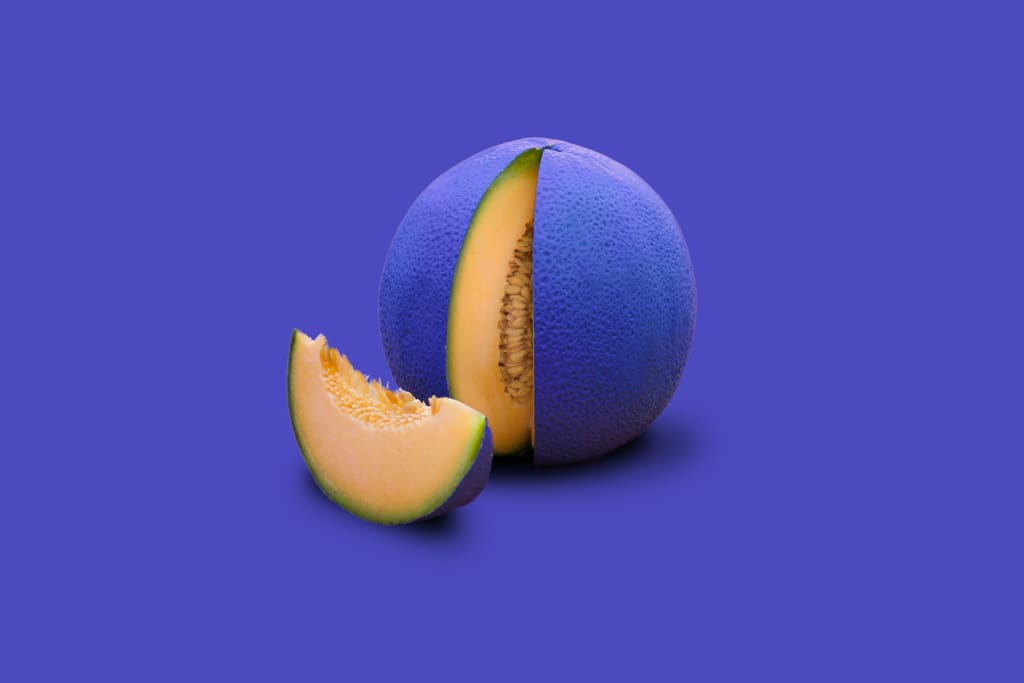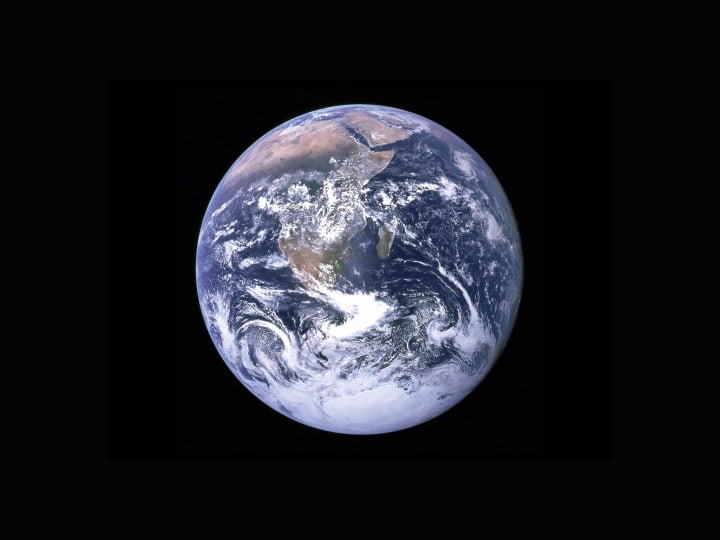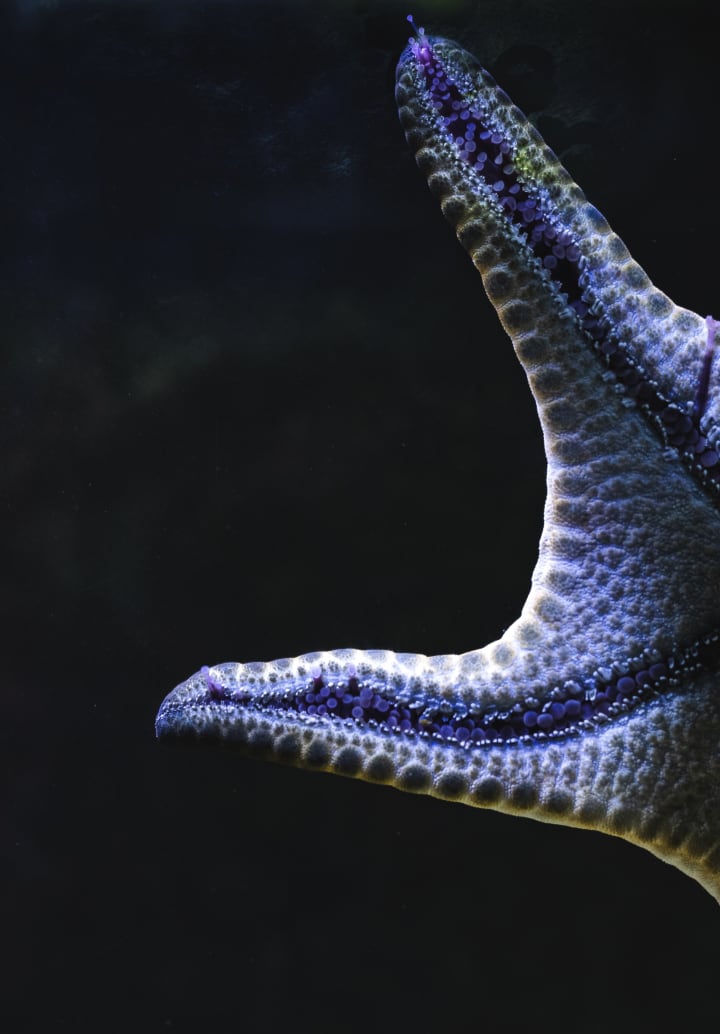30 Haikus About the Color Blue
An Exploration of Nature Through Poetry

Recently I entered the mountain haiku challenge on Vocal.Media. For that challenge, I wrote several haikus about different mountains around the world. I enjoyed learning about landscapes, cultures, and lore for that writing prompt.
A new VM challenge asked writers to come up with the best haiku about the color blue. Since I enjoyed the mountain challenge so much, I really wanted to go the extra mile for the new contest. I wrote 30 haikus exploring the color blue; I've compiled all of them into this article.
I learned about several things while writing blue-themed poems. I didn't know that lapis lazuli was ground down to make the most expensive pigment during the Renaissance—it's called ultramarine. The dark blue shade is featured in several of the most famous paintings, including works by Johannes Vermeer and 19th-century impressionist Vincent Van Gogh. Michelangelo left a painting unfinished because he couldn't procure the expensive pigment.
Before writing these poems, I didn't know much about the Spix's macaw, how blue wine was made, or the names of several rare blue foods.
Author's Notes On Their Writing
For this endeavor, I experimented with different forms, punctuation, and capitalization to see what effect they would have on the poems. For the article, I decided to group my haikus into similar sections. I think this makes for an easier reading experience.
My goal was to write about blue things in nature, but I definitely veered away from that premise.
My punctuation is somewhat wild if you compare all the poems together. When it comes to poetry, punctuation can nail down segments, which can hinder flow. Sometimes a poem benefits from no punctuation — other times, an excess of it is essential. At times, you want your words in a haiku to flow like a single sentence, other times you want disjointed phrases to work together to create vivid juxtapositions.
Do I think these poems are perfect? No! I think some of them really hit the mark, but some probably would benefit from a tweak or two. Eventually, you have to let your writing go: you have to stop editing things, or you'll start to ruin the piece and make it feel flat or voiceless.
What Exactly Is a Haiku?
Anytime I write about haikus, I think it's important to give a quick lesson on the form. Technically, English haikus don't make sense. The original form is in Japanese, and part of the craft has to do with the way the characters come together to look like art. It's poetry both for its message and for its look.
English haikus, or haikus with an alphabet of standard letters, will never really achieve what a logosyllabic writing system will when it comes to haikus and similar poetic forms. A logosyllabic language is made up of written characters that represent a word or morpheme. Japanese characters are called kanji.
Japanese haikus originally were the opening stanza to a larger poem called renga. Later, they became stand-alone pieces. The haiku dates back to the 17th century. Japanese haikus normally focus on season words, such as cherry blossoms for spring.
English and other language haikus have different criteria than the traditional form. English haikus are evaluated for how well writers play to a constricted word economy. The point of a haiku is to tell something quickly and something about the poem needs to resonate. A strong haiku has depth and doesn't just meet the minimum requirement of 17 syllables (generally 17).
Evaluating haikus is entirely subjective. What one reader loves won't necessarily garner the same response from another reader.
One of the most common stanza structures is made up of three lines with five syllables in the first line, seven in the second, and five in the third. Not all haikus stick to the 5–7–5 structure. Some haikus have a 3–5–3 pattern, some are expressed in a single line, and there is a vertical version with one to two words per line.
The first English haikus date back to the late 19th century.

30 Haikus About the Color Blue
I've ordered my haikus into the following sections:
- The Celestial
- Nature & Landscapes
- Animals
- The Sea
- Troubles in Humanity
- The Charms of Science
- Humor/Kitsch
The Celestial
The following set of haikus has to do with space and the unknown. I've included poems about natural phenomena as well as homages to mythical tales.
Many of these poems were inspired by my curiosity about the possibilities that exist beyond our planet. There is far more that we don't know than we do.
I hope there are advanced civilizations beyond our solar system. I also hope that yet-discovered things hiding in space will give us answers to our greatest questions. I'm grateful that there is an infinite frontier to explore. I am humbled by the immenseness of space.

1. Blue Light Wavelengths: Our Shared Sphere
Blue light is scattered
by gases in atmosphere,
hence our blue planet.
---
2. I Want to See the Inside of a Star: The Dance of Atoms
Ultrasound for stars:
wave the wand, what do you find?
Blue cubes and prisms.
---
3. The Brightest Star in Orion (the Hunter): Jewel of the Sky
Hot, luminous star,
Rigel, a supergiant,
bright blue in Hunter.
---
4. Conception: It All Starts With Dust
Constellation bright,
Celestial dust spirals,
Orbit the blue flame.
---
5. Blue Is the Future and the Sky Above: Green Is the Past and the Earth Below
Curious about
who are the celestial:
angels, seraphim.
---
6. Lapis Lazuli Bull Horns in Gilgamesh Epic: Prized Mineral for Unique Color
A bull from Heaven
fell to kill King Gilgamesh;
its horns cut and prized.
---
Nature & Landscapes
This section looks at when blue occurs in nature. The color is associated with the sky, sea, glaciers, rocks, and berries. When it comes to nature, blue is a clever color that appears sparingly.
Green is everywhere outside. Red is common in flora. I could list orange and yellow fruits for several minutes. Blue, on the other hand, is rare and catches our attention. How many blue fruits can you name?
Blue items fetched a higher price in ancient times. One of the most prized items: lapis lazuli. It was sought after in Mesopotamia, Egypt, China, Greece, and Rome.

7. Forgotten Battlefield in Scotland: Where the Thistles Gather
Mountains, thistles blue,
Other side of the meadow,
Secrets of the glen.
---
8. A Memory From Childhood: Playing on Grandma's Farm
Blue honeysuckle,
edible berries hanging,
smash them with fingers.
---
9. Infinity Cave: Endless Reflections
Blue dreamsicles hang:
stalactites encrusted
with cyan crystals.
---
10. Blue, The Rarest Color in Nature: Why Blue Leaves, Insects, and Fruit Are Special
Tricks of light be blue;
No compound found in nature
has true blue pigment.
---
Animals
There are only a few animals that are blue. Sometimes these animals are poisonous other times they're rare and sing beautiful songs.
When writing several poems about nature, it's hard not to consider whether humans are doing their part to make sure other species have their needs met. To me, conservation is our most sacred role. I believe humans are supposed to be caretakers of the planet. When we do our jobs right, flora and fauna flourish.
11. Wandering the Arctic: Pilgrimage Under the Blue Light
Pale, fur, blubber, thick
animals of the tundra
guided aurora.
---
12. A Kiss With the Wrong Prince: Toxic Glands
Blue poison dart frogs
paralyze their predators
when their skin is touched.
---
13. Extinct in the Wild: Spix's Macaw
The rare blue macaw
lost its Brazil habitat:
can new homes be built?
---
14. My Mom Cried for the Bird That Could Have Been: The Nest That Was in a Hanging Plant
Blue robin egg fell,
its nest carried in the wind,
my mom sat and cried.
---
15. Sitting at a Garden After My Mother Died: How Does Tomorrow Come?
Ripples in the pond;
Adonis blue butterfly
flutters among tears.
---
The Sea
When writing about water, I naturally want to use words associated with the color blue. Often water is used as a symbol for emotions. Sadness and tears are often depicted in a blue palette. It all feels really intuitive.
I wanted my sea poems to act as a counterbalance to the celestial poems. The ocean is another frontier that has hardly been explored. It holds many secrets. As space is the world above us, the sea is the world below us.
I sometimes stay awake at night thinking about the terrifying creatures that live at the bottom of the ocean.

16. As It Is Above, So It Is Below: Blue Supergiant Star, Blue Starfish
A starfish mimics
a heavenly star above:
nautical totem.
---
17. Sea of Glittering Stars: Vaadhoo Island, Maldives
Glow-in-the-dark beach,
luminescent waves crashing,
the algae shine blue.
---
FYI: For more context on the phenomena mentioned in the haiku, please refer to the below video.
---
18. Beethoven's Melancholic Dream: Magically Strange Arpeggios
Moonlight Sonata,
a boat floating at nightfall
on blue Lake Lucerne.
---
19. Early Morning: Standing on the Beach
Blue ocean waves crash
The sea-salt foam sticks to sand
Water up to knees.
---
20. Triton: Will He Calm or Raise the Waves?
Blue seashell in hand,
sail away, sail away, you
called sea god Triton.
---
21. Shipwreck: The Only Part to Survive
Mermaid, front of ship,
arising from fires, storms.
Mermaid, on blue waves.
---
Troubles in Humanity
I didn't write too many blue-themed haikus with an emphasis on humans and their suffering. Two unique haikus were created during this time. Two haikus that I think hit on a different level:
- The first is about the ongoing conflict between Ukraine and Russia.
- The second is about a very intimate scare for parents.

22. Turbulence: Deluge of Depression
Ukraine, ocean waves
cities bombed, infantry blues
as a waterfall.
---
23. Parents Waiting Anxiously at the Hospital: Congenital Heart Disease
Baby turning blue,
oxygen deficiency,
surgeon operates.
---
The Charms of Science
A few times while writing for this challenge, I felt pulled toward a particular concept. I'd flip through pictures, skim notes on artists, and wonder if certain blue things existed.
For whatever reason, these were the things I found compelling while researching the color blue.

24. Blue Wine: Macerated With Extracts of Fruit Skin
Chardonnay filtered,
pulped red grape skins, pigment pressed
natural blue wine.
---
25. Spooky Trick for Halloween: Blue Bonfire
Blue flames hint of souls,
igniting copper chloride,
tricking kids in masks.
---
26. The Secret of Renaissance Painters: The Most Expensive Pigment
A deep blue powder:
ultramarine, it's from ground
lapis lazuli.
---
27. Illusion With Capillaries: Floaters
Puritanical,
natural phenomenon,
blue dot in vision.
---
28. Dreamy Blue Cake: Natural Dye
Chopped leaves in batter
Butterfly pea flower tea
My tongue painted blue.
---
Humor/Kitsch
Every once in a while you just need to be weird… Instead of trying to come up with some grand and meaningful poem, I wrote about random things that I find amusing.
Sometimes comic relief or weirdness is what people need rather than something profound.

29. A Lobster Wearing a Bib: It Was Too Pretty to Kill
Blue lobster in net.
I took it to a cafe;
it ordered urchins.
---
30. A Blue Grocery List: Blueberries, Concord Grapes, Black Currants
Eat Indigo Milk
Cap Mushrooms, Adirondack
Potatoes, Blue Corn
---
Additional Resources
- Gurga, Lee; Haiku - A Poet's Guide; Modern Haiku Press 2003.
- Haiku in English: The First Hundred Years, eds. Jim Kacian, Philip Rowland, and Allan Burns, W.W. Norton & Co, New York, 2013.
- Henderson, Harold G. An Introduction to Haiku: An Anthology of Poems and Poets from Basho to Shiki, Doubleday Anchor Books, 1958.
- Hiraga, Masako K. (1999). "Rough Sea and the Milky Way: 'Blending' in a Haiku Text," in Computation for Metaphors, Analogy, and Agents, ed. Chrystopher L. Nehaniv. Berlin: Springer.
- Hiroaki Sato. One Hundred Frogs, Weatherhill, 1983.
- Konishi Jin'ichi; Karen Brazell; Lewis Cook, The Art of Renga, in Journal of Japanese Studies, Vol. 2, №1. Autumn, 1975.
- Lanoue, David G. Issa, Cup-of-tea Poems: Selected Haiku of Kobayashi Issa, Asian Humanities.
- Ross, Bruce; How to Haiku; Tuttle Publishing 2002.
My Favorites
---
A version of this article is also on Medium.
About the Creator
Andrea Lawrence
Freelance writer. Undergrad in Digital Film and Mass Media. Master's in English Creative Writing. Spent six years working as a journalist. Owns one dog and two cats.






Comments
There are no comments for this story
Be the first to respond and start the conversation.